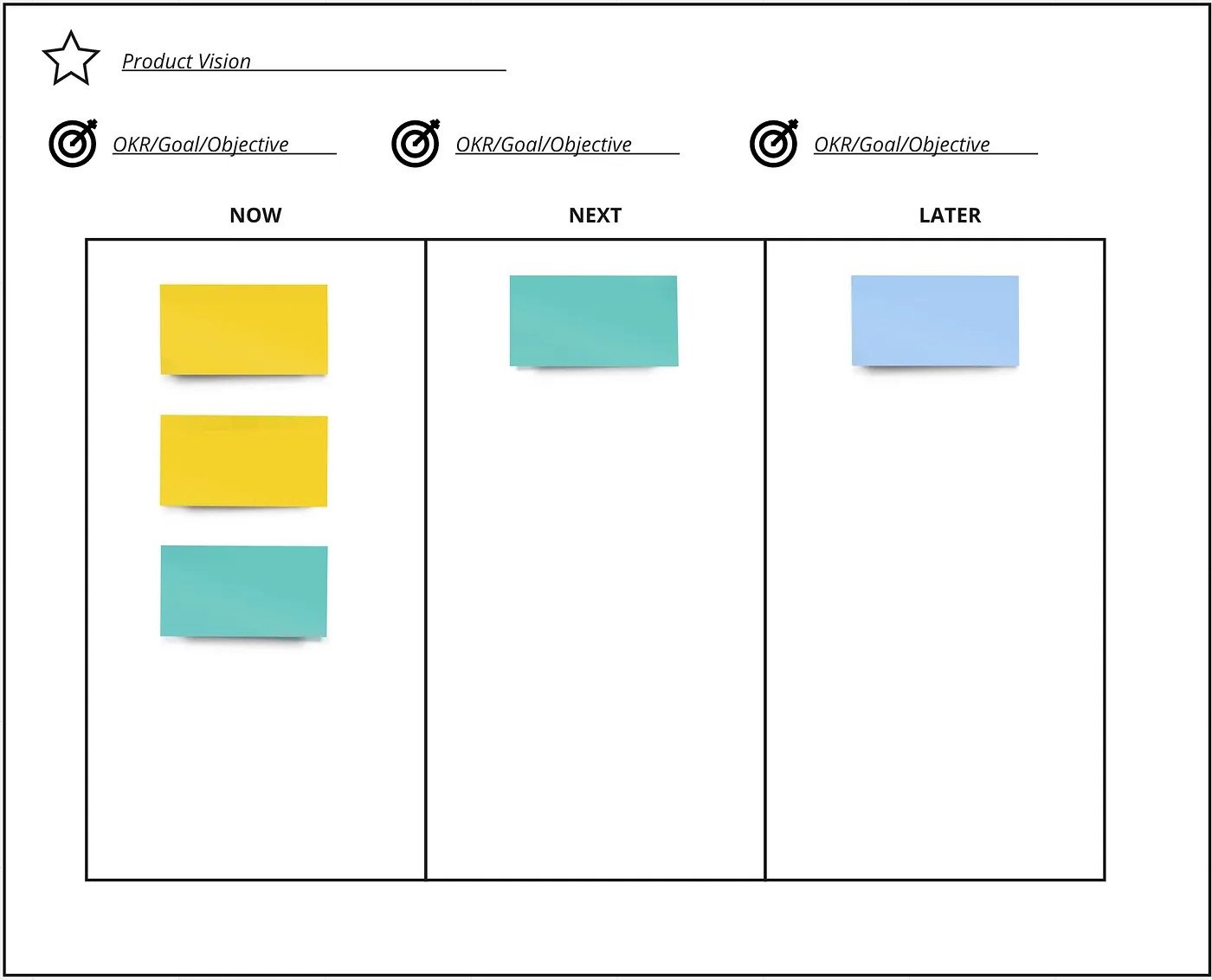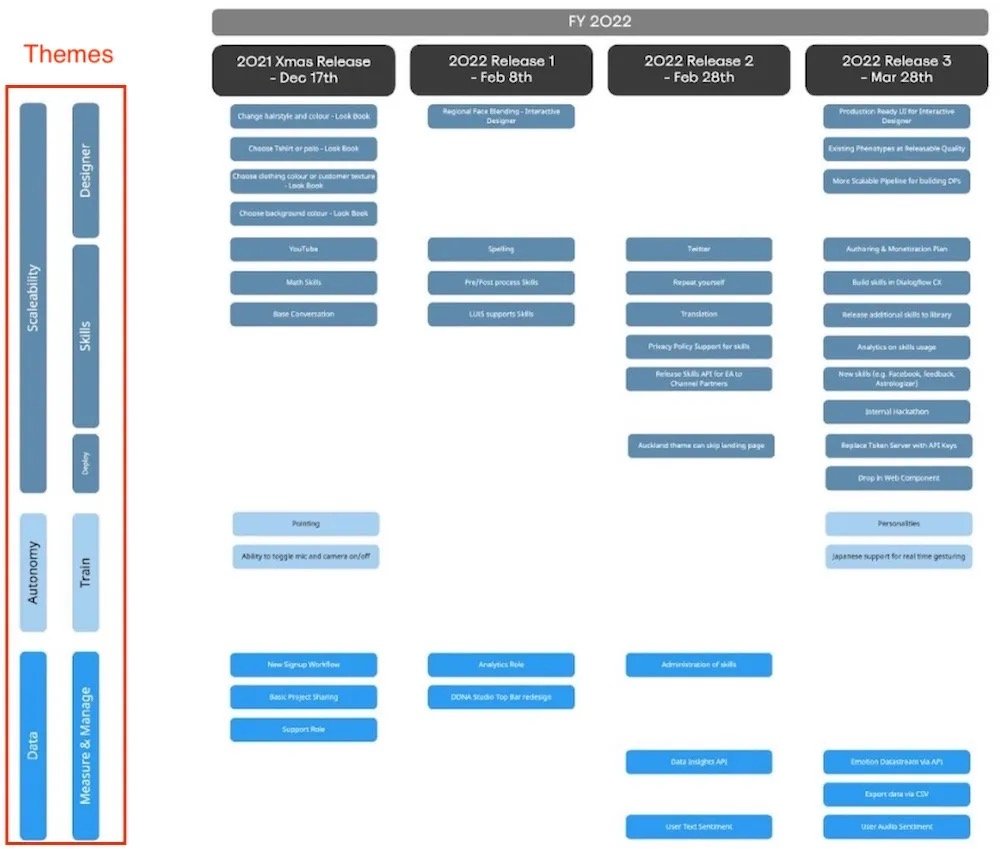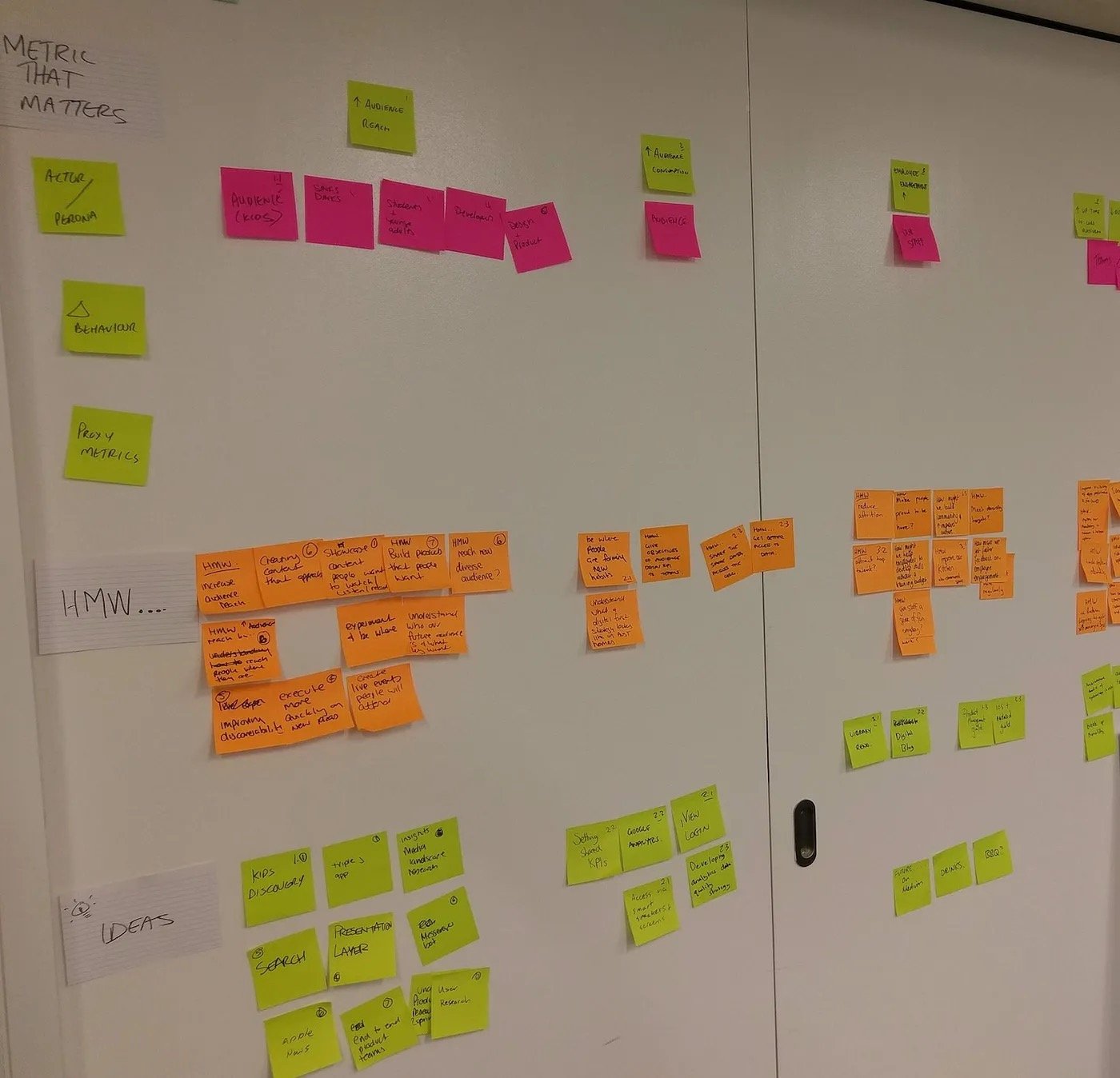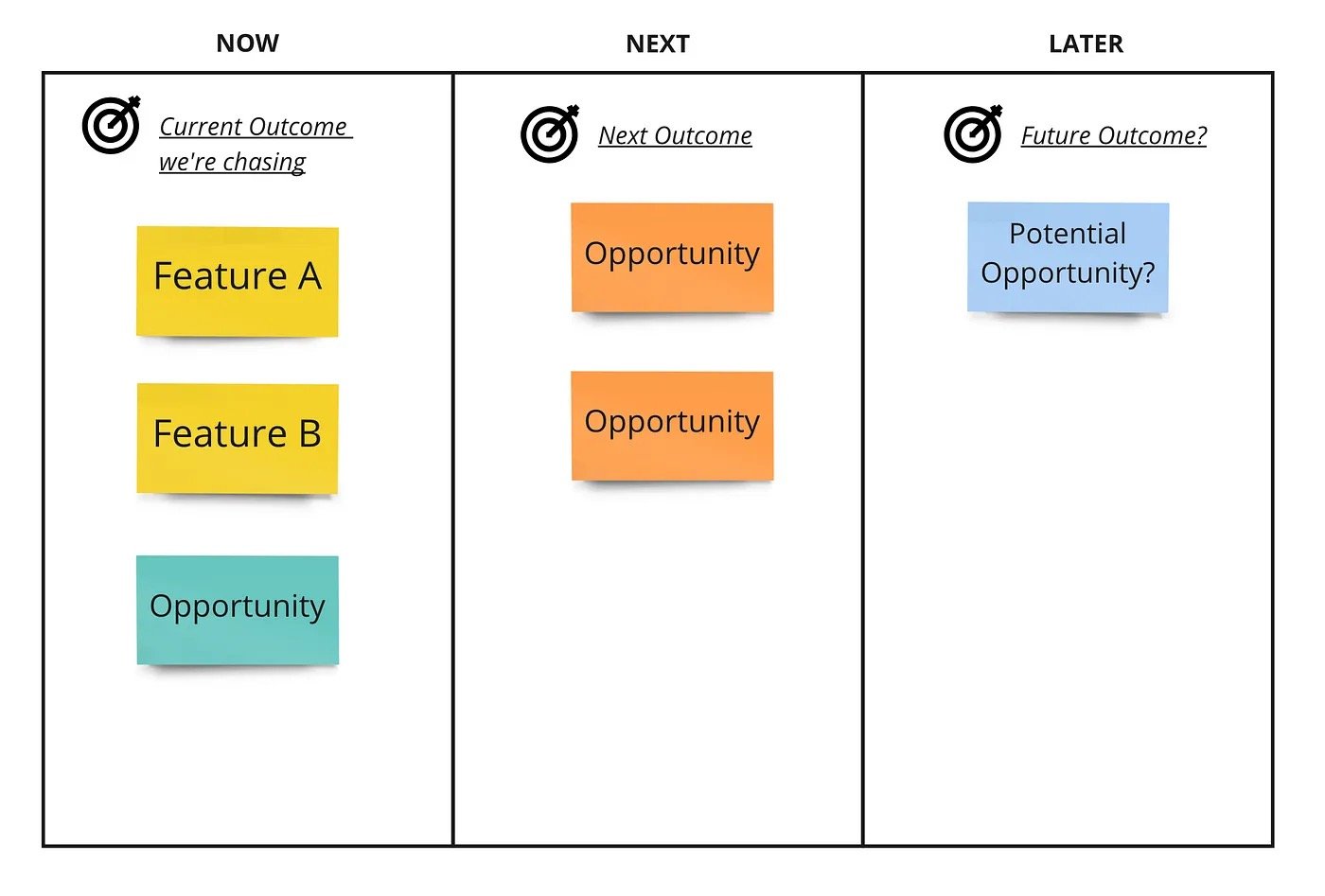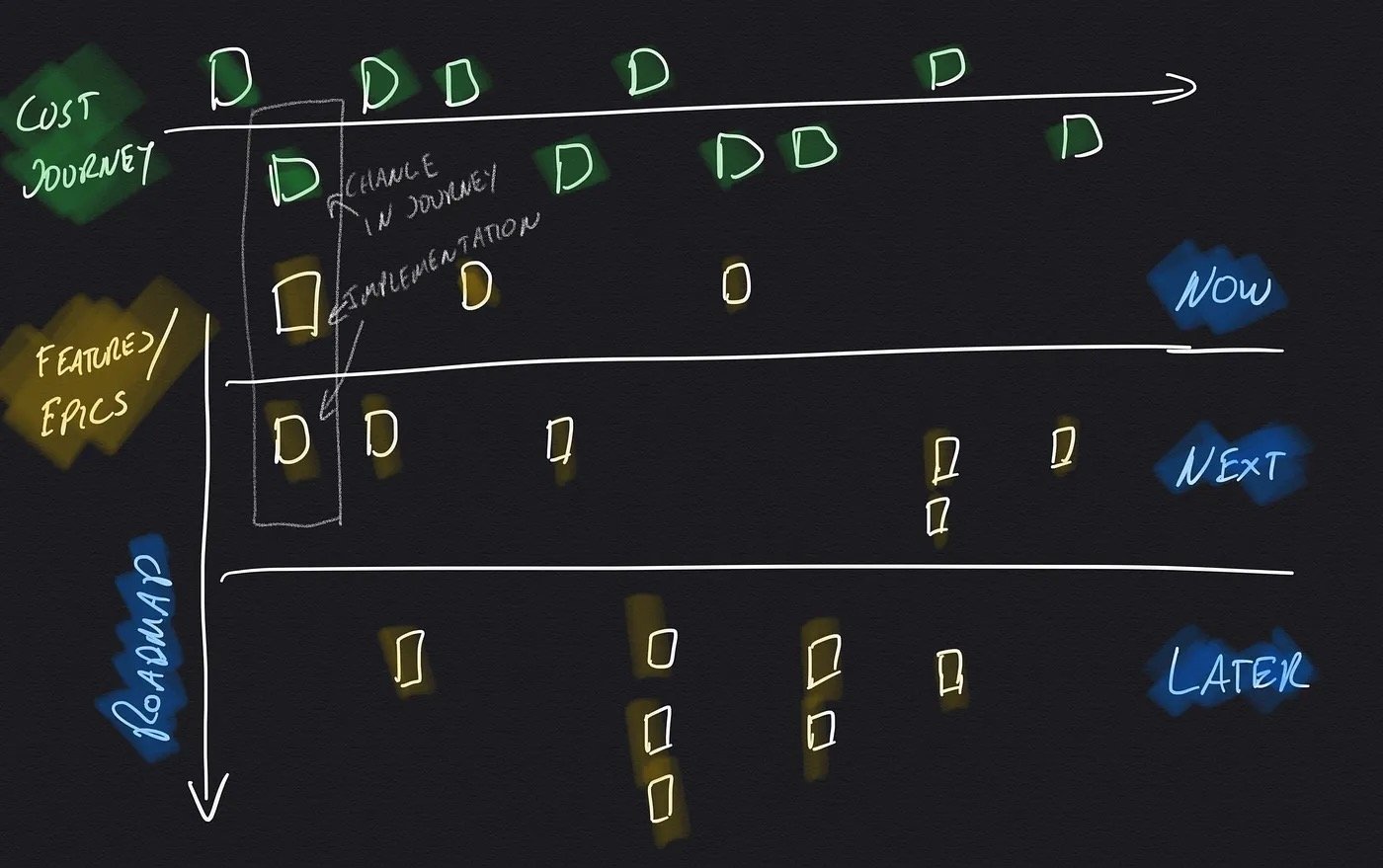7 Different Product Roadmap Formats
There are many different types of roadmaps and different formats that roadmaps can take.
After writing about ‘8 different ways to organize your Product Backlog’, which has since been transformed into Miro templates, I thought I would write something similar for Product Roadmaps.
Here are a few different shapes a Product Roadmap can take. I hope this gives you some inspiration and perhaps even makes you rethink your current roadmap format.
1. Timeline Roadmap
First up, is the most common and most controversial…the ‘timeline roadmap’.
Example: Timeline RoadmapI believe this format is the most common for a few reasons:
We’re used to measuring and plotting things via time
People always want to know WHEN things will be completed or when they’re going to get something by
We like certainty — timeline roadmaps clearly outline what will happen on a certain date (or so we think)
A timeline roadmap resembles a Project Plan which for some people it is more familiar
Although, there are some downsides:
Timeline Roadmaps generally end up being a wish list of features plotted against a timeline
Each item needs a completion date. This means estimating and assuming that the estimate is accurate
Dates give a false sense of certainty and control over the future
It also assumes that nothing will change or nothing happens that will change your plan
Lastly, dates often become ‘promises’ that we inevitably end up breaking and having to explain why we’re “behind some arbitrary schedule”
2. Now-Next-Later Roadmap
The Now-Next-Later roadmap (also known as a Lean Roadmap) is perhaps the most talked-about roadmap format in the Product-sphere, but not necessarily the most implemented.
Now-Next-Later Roadmap templateIt is widely popular and simple roadmap format.
By removing specific dates from your roadmap you can avoid many of the pitfalls in the timeline roadmap whilst still providing clarity on product direction.
There are many ways you can represent the Now-Next-Later roadmap. But generally work is represented into time horizons — in this case ‘now’ ‘next’ and ‘later’.
Generally, we would have greater clarity and certainty over the activities that we are working on ‘now’ and as we move into further time horizons that clarity would decrease and things become vaguer.
This helps represent the inherent uncertainty in product and also provides more flexibility in what actually ends up being done to achieve our goals.
Want to learn more about how you can build your own Now-Next-Later Roadmap?
ProdPad has a great article breaking down the Now-Next-Later Roadmap and how you can implement your own.
3. Release Roadmap
As the name suggests a Release Roadmap organizing your roadmap via releases.
This is similar to the above roadmap formats, the only difference is that rather than using time or horizons for your x-axis, you use product releases.
You may choose to have a date against each release. However, remember the downsides of dates and in this case, you don’t want to make empty promises for when a release will come out or not.
Avoiding dates is my preference as it gives flexibility and allows for uncertainty — when we are ready to release we will.
Credit: Miro Product Roadmap template example4. Theme Roadmap
The theme roadmap as the name suggests is organizing your roadmap into themes.
This is best suited for complex products and product portfolios as it can help convey a lot of information quickly and easily.
Organizing your roadmap into themes can be done in conjunction with the Now-Next-Later roadmap, Timeline and Release Roadmap too.
Example of organizing a product roadmap into themes5. Tree Roadmap
The Tree Roadmap is one of my favourite formats. It’s also the least known, in my experience but the power it gives you is unparalleled.
Tree Roadmaps are fantastic at visualising both product complexity but also the inherent uncertainty in the work we do.
Consider an outcome or feature on a part of the roadmap with multiple branches coming off it.
This shows that there is more than one path we may choose to take to achieve a goal.
Example Tree Roadmap templateExample Tree Roadmap mapped out on a wall. Outcomes are along the top, they are then broken down into opportunities and potential ideas/solutions.6. Outcome Roadmap
An outcome-based roadmap is similar to a Theme Roadmap but rather than organizing around a theme it is organized around an outcome.
Similarly, this can be done using a Tree Roadmap format, Now-Next-Later, Release and Timeline formats.
Example Outcome Roadmap using Now-Next-Later formatEven if you don’t decide to specifically organize your roadmap around outcomes, all Product Roadmaps should be leading to one or more outcomes.
Example Outcome Roadmap using Now-Next-Later and in a Tree format7. Customer Journey Roadmap
The Customer Journey Roadmap as the name suggests is when you organize your roadmap along your customer journey. This could be your existing or desired customer journey.
User story mapping is a great tool to use here to facilitate the creation of a Customer Journey Roadmap — however, note that User story maps are generally lower level and as mentioned in my 8 different ways to organize your Product Backlogarticle, they are better suited for backlog management.
However, you can use the same technique and philosophy to create an initial view of how you intend to achieve an outcome and then chunk it up a layer or two until it’s appropriate for a roadmap.
Example of a Customer Journey Roadmap using Now-Next-LaterBONUS: Dream Mapping
I recently connected with the awesome people over at Squadformers who came up with this amazing technique called Dream Mapping.
Essentially Dream Mapping is a technique for teams to map out the different avenues that they may take in order to achieve a goal. This can help teams determine trade-offs, challenges and ultimately identify the ideal path forward.
Example Dream Map. Credit: Squadformers | DreamMapping.io“Dream Mapping is a strategic framework that helps teams pick goals they actually care about, visualize and select the fastest path to get there, and get everyone on the same page using an actual map that tells a story.” - DreamMapping.io
I like Dream Mapping for a few reasons:
It’s visual
It’s collaborative,
It’s non-linear and;
It tells a story.
I believe we are more creative and better engaged at work when we inject some fun and creativity. Dream Mapping enables both of them through its visual and collaborative nature. Team’s can give their Dream Map a theme, like sci-fi or the above treasure map theme. This is a great way to engage the team and make strategy a bit fun!
I also like how it’s non-linear. This is one of the reasons why I like tree roadmaps and any form of tree diagram (like Impact Mapping, Opportunity Solution Tree, etc) because product management is inherently uncertain and non-linear. There are more than one ways to solve a problem, achieve a goal, etc.
The more linear roadmaps (e.g. timeline roadmap) fail to embrace this uncertainty and can often project a false sense of certainty - i.e. build X and we will get Y result.
If you’d like to learn more about Dream Mapping they have a:
Conclusion
Whatever roadmap format you decide to use, remember that a good roadmap is grounded in your vision and product strategy.
Further, remember the objective of your product roadmap and its audience.
For example, is this roadmap a public-facing roadmap?
If so, it may rule out certain formats, or perhaps point to one format in particular that does the best job of articulating your roadmap to the public.
One of the best (and worst) parts of Product Management is that there is no single way to do things.
There are many different ways to format a Product Roadmap and you need to determine what’s best based on your context, your goals and your audience.
Happy roadmapping! 🙌
📣 FYI: If you got value form this, I’m also launching an online learning platform with deep dives into specific PM topics like this over at productpathways.com.
You can see what the courses will be like over on Product Pathways YouTube channel here, where I will be posting regular videos about Product Management.
Learn product online at ProductPathways.com or watch for free on YouTube @ProductPathways.
